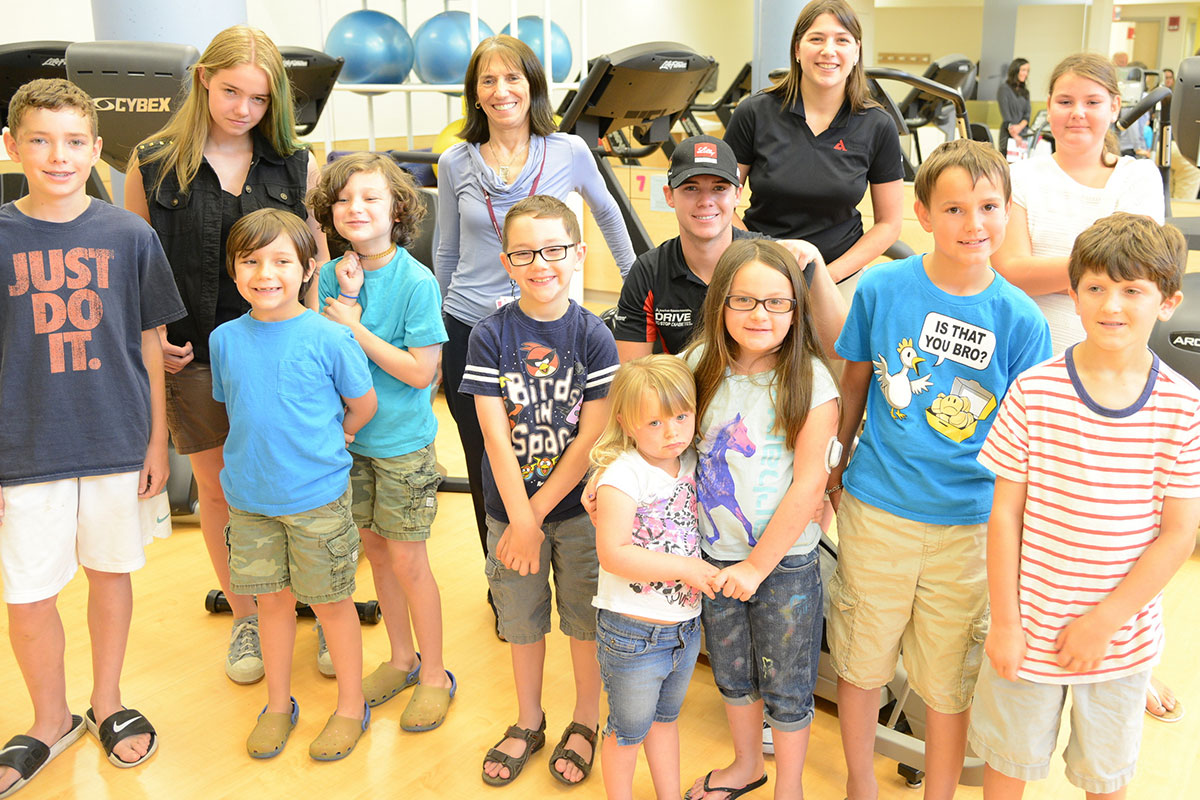Ryan Reed Visits Joslin Diabetes Center

Ryan Reed and new friends. Photo provided by Joslin Diabetes Center
Ryan Reed, a member of the Roush Fenway Racing NASCAR team, who lives with Type 1 diabetes, stopped by Joslin Diabetes Center Thursday to meet with young patients and discuss how physical activity has played a major role in his life both personally and personally.
Reed was told he had Type 1 diabetes in 2011, and with that diagnosis came the news that he’d never race again. But, he refused to give up his dream of racing. Now, Reed uses a blood glucose monitoring system and other diabetes management tools right in his NASCAR vehicle.
“My doctor came up with a sports drink base that has worked great for me while racing. I have a hole in the front of my helmet, I run a hose through it and I put a bite valve at the end of it; what it is basically is a camelback system,” Reed says. “It’s easy because I don’t have to reach for a water bottle. I use it four times a race I would say. The day of the race I check my blood sugar about 15 times, maybe a little more. Before the race, I want to keep my blood sugar around 120 because obviously I don’t want to start too low but at the same time, my blood sugar goes high every race from adrenaline and dehydration, so I have to start a little bit on the lower side otherwise it will spike too much during the race.”
When he first started racing with diabetes, Reed had a go-to “checklist,” which was critical to keep everything in order on the road. “I can’t tell you how many times I’ve left my Dexcom or all my sensors at home. I would have my mom overnight them to me, or I would have to turn around and get them. There’s been times my parents drove four hours at night to bring them to me,” he says. Now, Reed reminds others of how important it is to have this kind of checklist, especially at the start.
Reed also told the patients at Joslin that is important to find time for exercise, even when on the road. “It’s finding time to do something, that’s the most important thing. If I have an hour after a race, I will go on a 3 or 4 mile run or take my bike to some tracks and go for a 30 mile ride. It’s just important for me to find something,” he says. “When I’m on the road, it’s not always easy to find a gym to go lift weights, but then when I am home I need to make sure I do the strength training so I don’t fall behind on that. It’s tough, that’s probably been the toughest thing that I had to get used to.”


